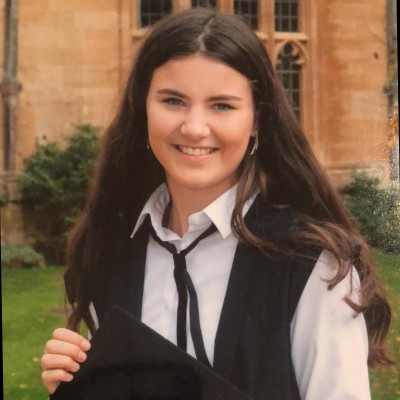|
Western culture is threatened by the arrival of refugee populations and their culture. This idea is not new. In the nineteenth century, eugenicists suggested the existence of a racial hierarchy. This led to the idea of threat associated with the lesser other. The white "Nordic" race was seen to be under threat from mixing with other races. Robert Young argues that culture has replaced race as a marker of ‘sameness’ and ‘difference’.[1] Within a cultural hierarchy, Western culture as constantly under threat from others external to superior ‘host’ societies.
The cultural hierarchy suggests that the culture of refugees is intrinsically inferior. The superior ‘host’ culture infers a lack of value or merit associated with the refugees’ culture. It also fixes as though static the culture of refugees. This denies an understanding that culture, as a human endeavour, offers the opportunity for invention, change and reaffirming and re-inventing tradition. Through art, music, and storytelling, refugees can stir empathy in their Western observers. This embodiment of refugee culture is recognised as a powerful means to humanise the experience of refugees. However, Western observers fetishize and ‘authenticate’ refugee’s artistic output. They fix the art and objectify refugee artists. This static understanding of culture also serves the creation of the exceptional refugee. Art is used to embrace individual ‘exceptional’ refugees, divorcing them from their wider cultural context. Therefore, there is no need to reassess the negative assumptions made about everyday culture of the refugees. This article aims to problematize both these projections of the culture of refugees. The cultural hierarchy demonises refugees and positions them as ‘Other’. The fetishization of the culture continues to make the work of individual artistic refugees an object of the Western gaze. Meanwhile it fails to alter prevailing power relations underpinning the receipt of art in the Western gaze. Construction of ‘otherness’ through culture Landman and colleagues in German studies found that “different cultural identity, religious identity, and value system” than those of the members of the host community were perceived as a symbolic threat to their way of life.[2] The host community used this as a moral reason to limit the admittance of refugees. Gender norms, women’s freedom and the wearing of the burka were cited as key cultural differences.[3] The Landman study demonstrates how culture and religion provide anti-refugee arguments with their basis of difference. They demonise the cultures as misogynistic, backward, and radical. The omnipotent and dangerous presentation of culture leans into cultural deviance theory. This theory constructs culture as determining the actions of the individual [refugee] rather than the individual being responsible themselves. Thereby all refugees are in opposition to the cultural landscape of their host country as they merely embody their backward cultural norms. The notion of 'western culture' is presented to be under threat- it needs to be protected from external influences. Lesley Bartletta, Mary Mendenhallb, and Ameena Ghaffar-Kucher examined refugee schooling experience in international schools in the US.[4] The perception of culture itself created a dichotomy and opposition of host and refugee home cultures. They found that more flexible, fluid definitions of culture in the school curriculum would ease this tension. It would also help refugee students to address feelings that they were rejecting their culture or history by participating in new cultural practices in U.S. schools. Another perception of refugees is that they cannot speak English. Eric Pickles spoke that in the UK there is "incomprehensible situation where no one can speak English as their main language in 5% of our households."[5] He argued that this was "terrible for community relations". Pickles reaffirmed the link between cultural practice- the lack of English- and assimilation into society. In fact, the census revealed that despite 13% of the population being born abroad, in total only 1.6% of residents could speak English not well or not at all. To reconfirm their status as ‘others’ politicians and media significantly overemphasise ‘lack of English’. Transforming the different languages of refugees into direct threats and dangers to the dominant culture of the host nation. Culture as the Basis of Humanity Forms of culture are impactful in their ability to generate understanding of human experience. Art is therefore seen to humanise the refugee subject. Visual and material culture allows the public to access counternarratives to the dominant discourse which generates fear and mistrust of refugees and asylum seekers. Behrouz Boochani, artist and refugee, released the film Chauka, please tell us the time, which chronicled his experience of detention on Manus Island in Australia. In his work, No Friend But the Mountains: Writings from Manus Prison, Boochani writes “One month has passed since I was exiled to Manus. I am a piece of meat thrown into an unknown land: a prison of filth and heat. I dwell among a sea of people with faces stained and shaped by anger, faces scarred with hostility.”[6] Through cultural exploration, Boochani accesses a process of healing and is also able to control his voice and story. Nonetheless, the Western audience valorise his art whilst simultaneously disregarding the reality of his situation; they invited him to an award show which he was unable to attend given the terms of his detention. Boochani also describes the oppressive power dynamics that condition the visits of the most successful photographers. He notes that “the camera is weaponised and aimed at the subject in an attempt to capture an image of a refugee that evokes the most heightened sense of compassion possible.”[7] Boochani is used as a symbol of Western acceptance since his work is embraced and celebrated. The Western gaze approves of his message, turning him from an active artist to 'docile’ refugee. Through his art the Western world views Boochani as exceptional in comparison to the refugees he is surrounded by on Manus Island. For the Western gaze, culture and what refugees can bring is central to the image of a ‘good refugee’ and acceptability. Similar findings emerged from the research conducted by Evropi Chatzipanagiotidou and Fiona Murphy. [8]Their study analysed how NGOs and government schemes used art to offer refugees an avenue to tell their story. Art could 'give voice' to refugees and their experiences. Yet it confined them within the specific category of ‘refugee art’ rather than allowing the artists to convey more complex cultural identification. Artists expressed how they felt more silenced than empowered. Western refugee schemes use art to determine acceptable cultural output. Refugees found their art reduced to a cultural artefact of refugeeism rather than treated as art in its own sake. Although culture is an important way the Western public can relate to refugees and their experience, it cannot be attributed to that focus alone. For refugees’ culture is an avenue for their own personal explorations. It should not be valorised or fetishized by a Western lens. Looking to the Future. What it means to assimilate is often not to do with culture but trauma. For refugees, trauma is mixed and varied. Some factors include: the desire to return home, the experience of racism, grief, and being a refugee in a society where the majority cannot understand displacement. These constant psychological forces inform processes associated with assimilation in far more tangible ways than culture. To consider these factors helps us to dispel the false ideas of frictionless assimilation or culture as static. It also rejects the idea that refugees’ cultures inherently prohibit integration and are aggressive towards the host nation. Rather than be observed as a threat or fetish, the culture of refugees offers an opportunity to realign understanding and progress of the very real human condition underpinning much of ‘refugee’ art. Notes: [1] Young, Robert, Colonial Desire, Hybridity in Theory Culture and Race. (New York, London, Routledge, 1995) p.53 [2] Landmann, H., Gaschler, R., & Rohmann, A. (2019). What is threatening about refugees? Identifying different types of threat and their association with emotional responses and attitudes towards refugee migration. European Journal of Social Psychology, 49 (7), 1401-1420. [3] Ibid. [4] Culture in acculturation: Refugee youth’s schooling experiences in international schools in New York City Lesley Bartletta,⁎ , Mary Mendenhallb , Ameena Ghaffar-Kucher, p.110 [5] https://www.ukpol.co.uk/eric-pickles-2013-speech-on-uniting-our-communities/ [6] Claudia T. The Emotional Confluence of Borders, Refugees and Visual Culture: The Case of Behrouz Boochani, Held in Australia’s Offshore Detention Regime. Critical Criminology. 2020 [7] Ibid. [8] Evropi Chatzipanagiotidou & Fiona Murphy (2020) ‘Devious silence’: Refugee art, memory activism, and the unspeakability of loss among Syrians in Turkey, History and Anthropology, DOI
0 Comments
Leave a Reply. |
Author
Sofia is second year History student at Oxford University. She is working with us on our Refugee Stories Project as part of the Oxford University Micro Internship programme. |

 RSS Feed
RSS Feed

